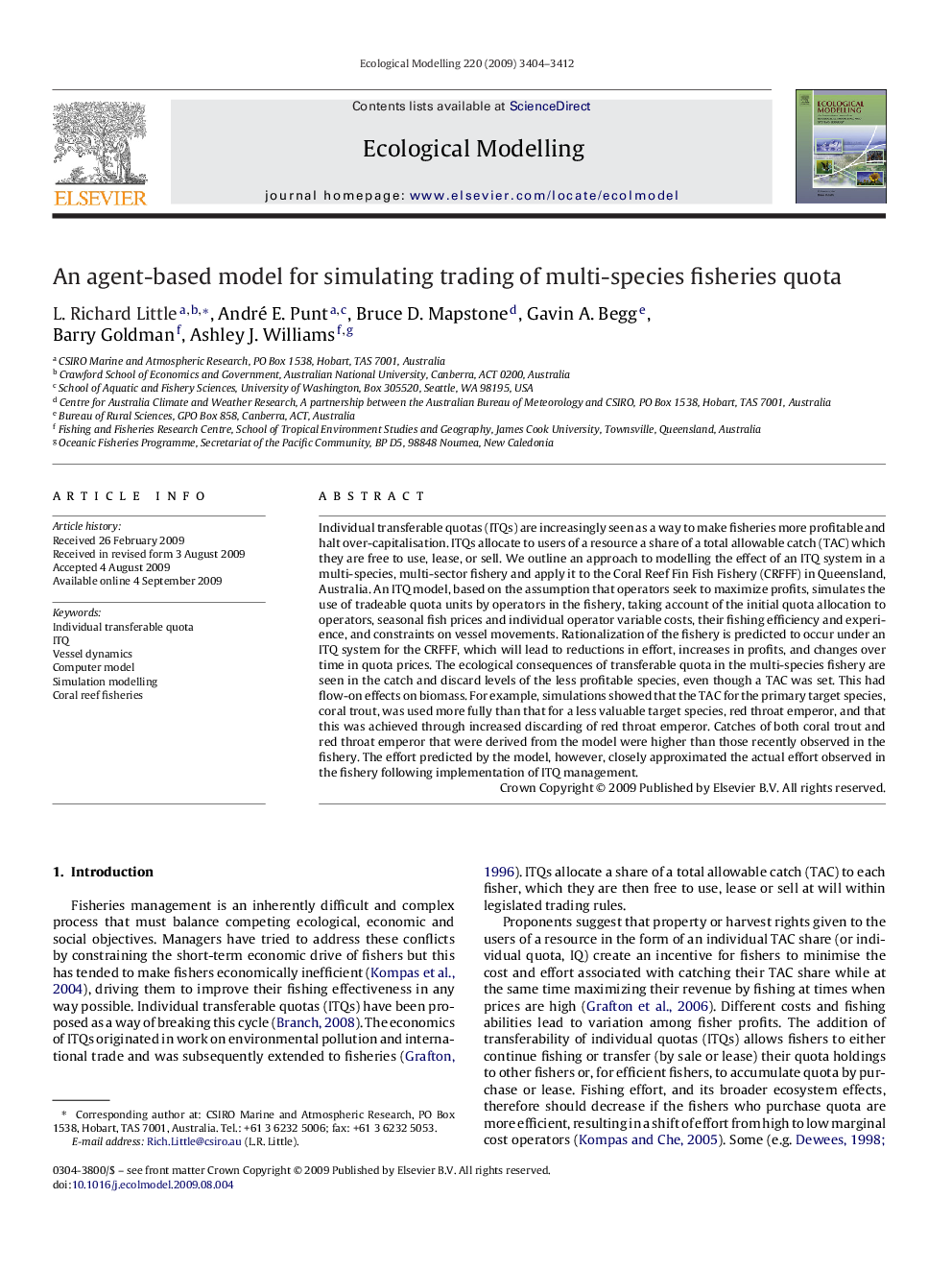| Article ID | Journal | Published Year | Pages | File Type |
|---|---|---|---|---|
| 4377581 | Ecological Modelling | 2009 | 9 Pages |
Individual transferable quotas (ITQs) are increasingly seen as a way to make fisheries more profitable and halt over-capitalisation. ITQs allocate to users of a resource a share of a total allowable catch (TAC) which they are free to use, lease, or sell. We outline an approach to modelling the effect of an ITQ system in a multi-species, multi-sector fishery and apply it to the Coral Reef Fin Fish Fishery (CRFFF) in Queensland, Australia. An ITQ model, based on the assumption that operators seek to maximize profits, simulates the use of tradeable quota units by operators in the fishery, taking account of the initial quota allocation to operators, seasonal fish prices and individual operator variable costs, their fishing efficiency and experience, and constraints on vessel movements. Rationalization of the fishery is predicted to occur under an ITQ system for the CRFFF, which will lead to reductions in effort, increases in profits, and changes over time in quota prices. The ecological consequences of transferable quota in the multi-species fishery are seen in the catch and discard levels of the less profitable species, even though a TAC was set. This had flow-on effects on biomass. For example, simulations showed that the TAC for the primary target species, coral trout, was used more fully than that for a less valuable target species, red throat emperor, and that this was achieved through increased discarding of red throat emperor. Catches of both coral trout and red throat emperor that were derived from the model were higher than those recently observed in the fishery. The effort predicted by the model, however, closely approximated the actual effort observed in the fishery following implementation of ITQ management.
